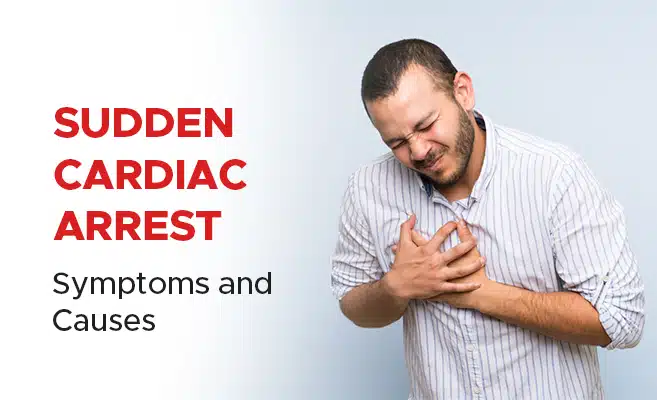Symptoms of Cardiac Arrest

Cardiac arrest is a medical emergency that occurs when the heart suddenly stops beating or beats irregularly, disrupting blood flow to the body and vital organs. In cardiac arrest, the heart's pumping action is compromised, leading to a cessation of blood circulation. This condition is different from a heart attack, although a heart attack can sometimes lead to cardiac arrest.
Key points about cardiac arrest include:
-
Abrupt Loss of Heart Function:
- Cardiac arrest is characterized by the sudden loss of effective heart function. The heart may stop beating altogether (asystole) or beat irregularly (ventricular fibrillation or tachycardia).
-
Medical Emergency:
- Cardiac arrest is a medical emergency that requires immediate intervention. Without prompt and effective treatment, it can quickly lead to unconsciousness and death.
-
Symptoms:
- The person experiencing cardiac arrest may lose consciousness and stop breathing. There is often no pulse, and the individual may appear lifeless.
-
Causes:
- Common causes of cardiac arrest include underlying heart conditions such as coronary artery disease, heart attack, arrhythmias (irregular heartbeats), and structural heart problems. Other factors, such as drug overdose, trauma, or electrocution, can also lead to cardiac arrest.
-
Linked to Heart Attack:
- While cardiac arrest and heart attack are distinct events, they can be related. A heart attack can lead to cardiac arrest if it causes significant damage to the heart muscle or triggers a dangerous arrhythmia.
-
Treatment:
- The primary treatment for cardiac arrest is cardiopulmonary resuscitation (CPR) and defibrillation. CPR involves chest compressions to manually circulate blood, and defibrillation uses an automated external defibrillator (AED) to deliver an electric shock to the heart, restoring a normal rhythm.
-
Time Sensitivity:
- Time is critical in the treatment of cardiac arrest. The chances of survival decrease rapidly with each passing minute without intervention. Immediate initiation of CPR and access to an AED significantly improve the likelihood of a positive outcome.
-
Post-Resuscitation Care:
- Even if the person is successfully resuscitated, they may require intensive medical care to address the underlying cause of the cardiac arrest and prevent future occurrences. This may involve coronary interventions, medication, or other interventions.
It's important to note that cardiac arrest can affect individuals of any age, and prompt action is essential for the best possible outcome. Recognizing the signs of cardiac arrest, calling for emergency help, and initiating CPR and defibrillation can make a significant difference in saving lives.
Thank you,
